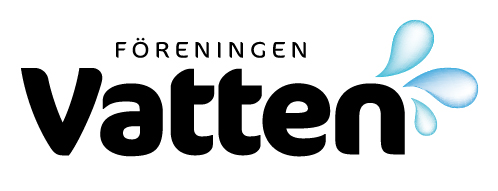PHOSPHORUS AVAILABLE FOR PLANT UPTAKE IN SEWAGE SLUDGE – A LITERATURE SURVEY / Växttillgänglig fosfor i avloppsslam – en litteraturstudie
Re-use options for sewage sludge are being developed since the disposal of sludge is becoming an increasing problem. The spreading of sewage sludge on agricultural fields as a phosphorus (P) fertiliser is one such option given that it fulfils the requirements for limitation values for metals/toxic substances. The plant availability of P in sludge has […]
EXPERIMENTELL STUDIE AY FLÖDESSTRUKTUREN I FLOTATION OCH PÅVERKAN AV LUFTINNEHÅLL,| HYDRAULISK BELASTNING OCH KONTAKTZONSGEOMETRI / Experimental study on the flow structure in Dissolved Air Flotation and the influence of air content, hydraulic loading and contact zone geometry
Research on flow dynamics is believed to open ways for increasing the capacity of the Dissolved Air Flotation (DAF) process in water and wastewater treatment. The paper describes a study on the flow dynamics at Lund Institute of Technology in Sweden. By using an Acoustical Doppler Velocimeter (ADV) flow structures were determined in a pilot […]
SYSTEMATISK BESLUTSPROCESS FÖR ETT EKOLOGISKT, SOCIALT OCH EKONOMISKT HÅLLBART VATTENAVRINNINGSOMRÅDE / Systematic decision support: Achieving ecological, social and economic sustainability in a catchment area
Water quality improvements for catchment areas are optimal if they take into account local variation in geophysic, hydrologic and economic conditions. A model is developed which uses a series of matrices to describe local variation with respect to ecological and socio-economic variables. This model may be used by catchment based interest groups to evaluate and […]
BIOLOGISK RENINGSANLÄGGNING FÖR LAKVATTEN FRÅN DEPONI / Biological treatment plant for leachate from landfill
A treatment plant for landfill leachate was created in 1997 in connection to Gärstad waste treatment plant near the town of Linköping, Östergötland, Sweden. The treatment plant consists of one aerated outlevelling basin (former clay pit) and three constructed ponds. The ponds are 0.3 m in the first half (to keep oxygen in the water) […]
SAMORDNAD RECIPIENTKONTROLL – BEHOV AV FÖRNYELSE / Monitoring programmes for Swedish waste receiving waters – a need of renewal
The quality of waste receiving waters is in Sweden monitored on catchment basis to gain knowledge for decisions on water protection measures. The results are presented in annual reports. Questions have been raised regarding the effectiveness of this monitoring. Therefore, 25 reports covering different types of catchments have been evaluated (mainly the chemical parts). Issues […]
DIVERSIFIERAT BRUKANDE AV SJÖAR OCH VATTENDRAG: EN FRAMTIDSVISION FOR SVENSK VATTENVÅRD / Diversified use of water resources
The technical knowledge on how to improve the water quality in eutrophicated waters is relatively well known, whereas the tools available for society to manage and sustain reasonable water quality are less developed. We suggest that instead of viewing freshwater systems as problems, they should be viewed as resources possible to make use of in […]
BLÅGRÖNALGETOKSINER I DRIKKEVAND – INTRACELLUL/ERE LEVERTOKSINER FRIGIVES KUN DELVIST VED NEDFRYSNING AF VANDPRÖVER / Blue-green algal toxins in drinking water – only partial release of intracellular hepatotoxins through freezing of water samples
Quantification of toxins from blue-green algae (cyanobacteria), particularly the hepatoxic microcystins, has become a routine procedure in assessment of drinking-water quality in many countries. The effect of storing water samples frozen prior to toxin analysis was examined using a laboratory culture of Planktothrix agardhii. In culture material prepared (filtered and toxins in the culture medium […]
HÅLLBAR LÖSNING ELLER GRÖNT FILTER? Användning av mark-växtsystem för behandling av spillvatten i Sveriges kommuner / Sustainable solution or green end-of-pipe? The use of plant-soil-systems for treatment of sewage water in Swedish municipalities
There are an increasing interest for use of wetlands and irrigation solutions regarding treatment of sewage water in Sweden. The reasons behind this development, and practical consequences of the implementation of these solutions, provide us with characteristics of the changes. To be able to understand the possibilities for sustamable development in Sweden, such results are […]
FULLSKALE- OCH SIMULERINGSSTUDIE AV BIOLOGISK FOSFORREDUKTION PA KÄPPALAVERKET / Biological Phosphorus Removal at Käppala Wastewater Treatment Plant – a Full-scale and Simulation Study
Käppala wastewater treatment plant on Lidingö was extended for nitrogen removal. Due to the new process configuration the plant could implement biological phosphorus removal (bio-P). To study the possiobilities to introduce bio-P removal at the plant, fullscale and simulation tests were conducted. Results from the fullscale tests did not give any good answers since metal […]
NITROGEN CONVERSION PROCESSES WHEN TREATING WASTEWATER IN SOIL SYSTEMS – THE IMPORTANCE OF AMMONIUM ADSORPTION / Kväveomvandlingsprocesser vid behandling av avloppsvatten i ett markbehandlingssystem – Ammoniumadsorptionens betydelse
The objective of this study was to determine the importance of ammonium adsorption compared to other nitrogen separation and transformation processes, when infiltrating wastewater into vertical soil treatment systems. Mass balance calculations based on literature values were employed, but also complementary column experiments were performed to quantify the ammonium adsorption capacity of sand with respect […]
